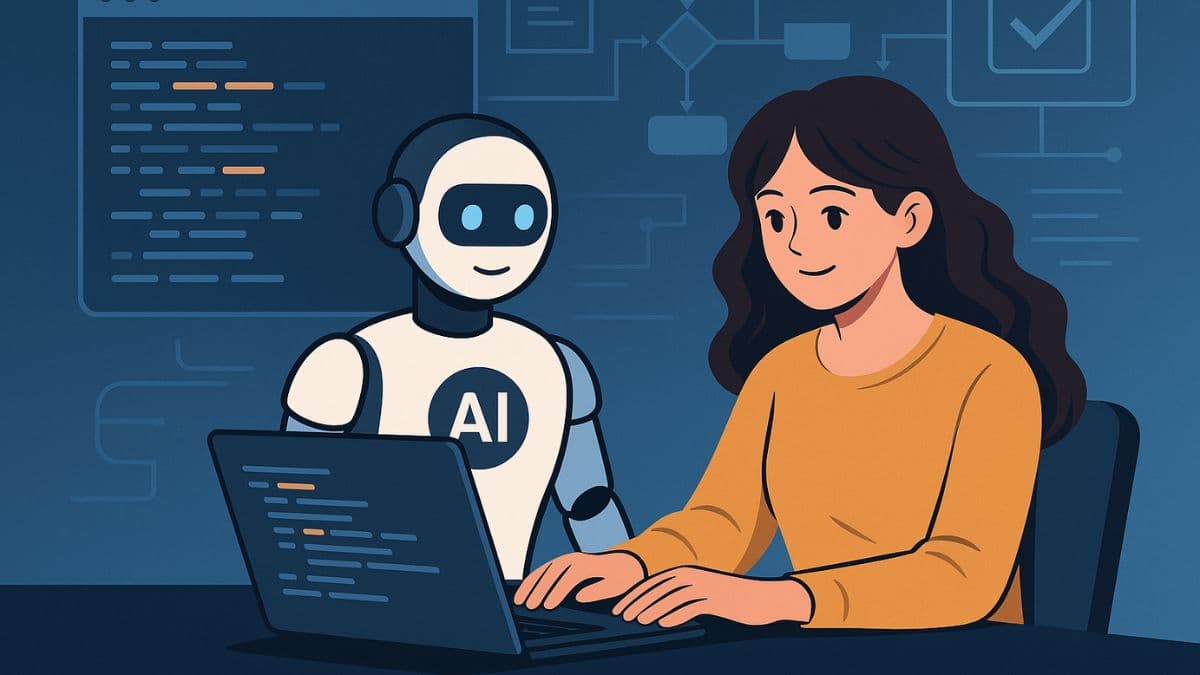As artificial intelligence becomes embedded in the daily workflows of software developers, the emergence of AI coding assistants is accelerating the pace of innovation. In today’s world with its uncertain economic times, high inflation and cautious investment, rapid innovation can help a company stay ahead of the competition by bringing new services and products to market faster, despite dwindling tech budgets. In fact, 40 percent of average Australian businesses adopted AI technologies by the end of 2024, and more than two-thirds of Australia’s top tech leaders identified AI as the defining technology trend for 2024, underscoring its pivotal role in driving innovation.
Further to this, a recent CIO Dive report produced by OutSystems and KPMG revealed that AI adoption has reached critical mass, with 99 percent of the organisations surveyed now incorporating AI into their SDLC processes. Ninety-three percent of respondents have already reported measurable impacts from AI.
However, with speed comes complexity and risks that IT leaders must carefully navigate.
One growing concern is the over-reliance on AI-generated code. While these tools can improve productivity and reduce repetitive tasks, they can also lead to ‘orphaned code’ – in other words, segments of logic that are poorly understood, hard to maintain, or misaligned with the overall system architecture. Additionally, code generated by AI often lacks explainability, making it harder for teams to ensure compliance, maintain governance, or fix bugs when they arise.
Solving challenges with AI-powered low-code
To address this challenge, development teams are increasingly turning to AI-powered low-code platforms as a complementary solution. These platforms provide abstraction layers that create more transparent and manageable code structures. Rather than replacing developers, low-code tools help teams govern and refine AI-generated components better, by encapsulating them in clearly defined models. The result is a system that enables rapid innovation while reducing technical debt and preserving the integrity of the initial vision and the project.
The CIO Dive report revealed that 69 percent of leaders feel that AI adoption has increased developer productivity, pointing to a growing shift away from routine, labour-intensive processes towards more strategic, business-aligned roles.
Crucially, low-code approaches make AI-assisted development more explainable. When changes are made through visual models and templates, it becomes easier for teams to audit what is happening ‘under the hood’ – something that is often a blind spot when relying solely on AI assistants, and traditionally has been well beyond the comprehension of those employees who will be using the eventual build. This balance of human oversight and AI augmentation will be essential as organisations scale their use of intelligent development tools.
A ‘shift-left’ approach for greater accuracy and efficiency
Beyond code quality, another priority for development teams is application performance. As digital systems grow more complex, ensuring that apps perform reliably under real-world conditions requires continuous refinement. Adopting a true ‘shift-left’ approach to development can help reset the bar.
This principle refers to the practice of moving tasks such as security and quality assurance earlier in the software development lifecycle (SDLC) – thus making them a priority earlier in the process and ensuring they stay visible throughout the build.
Rather than waiting until testing or deployment to address issues, teams that ‘shift left’ prioritise quality and performance from the earliest stages of the development lifecycle. AI-powered low-code platforms are instrumental in making this possible. With built-in features like automated code reviews, performance monitoring, and natural language processing (NLP) capabilities, these platforms allow developers to detect and resolve issues quickly – often before they surface in production.
More importantly, the ‘shift left’ approach empowers development teams to iterate rapidly without sacrificing governance or security. As organisations seek to keep pace with user demands and market changes, the ability to continuously fine-tune applications becomes a competitive advantage. A ‘shift-left’ mindset, supported by the right tools, ensures long-term maintainability and scalable innovation.
The human-centric future of AI
Looking further ahead, the future of software development – and operations more broadly – is being reshaped by agentic AI, a new frontier in automation. Agentic AI refers to autonomous agents that can interpret natural language prompts, diagnose problems, suggest solutions, and even take action across systems without human intervention.
In asset-intensive industries such as energy, manufacturing, and logistics, this could redefine how operations are run. By embedding intelligent agents into critical workflows, organisations can streamline decision-making, reduce manual intervention, and respond faster to disruptions or inefficiencies. Again, this can be a competitive advantage in the face of economic headwinds.
What sets agentic AI apart is its human-centric approach. By allowing operators and technicians to interact with complex systems using plain language, these agents eliminate many of the traditional barriers to digital transformation, such as the need for deep technical expertise or custom-coded integrations. With high-quality data as a foundation, agentic AI enhances both adaptability and long-term system resilience.
In many ways, the integration of AI assistants, low-code platforms, and autonomous agents signals a broader shift in software development; one that moves beyond writing code to orchestrating intelligent systems. It’s a future that prioritises governability, transparency, and speed — and it’s unfolding rapidly.
For development teams navigating this evolution, the key will be balance – embracing the speed and efficiency of AI, while maintaining the structure, oversight, and strategic thinking that turn technology into long-term business value. The future of software isn’t just about generating more code; it’s about orchestrating intelligent systems across the full application lifecycle.
Keep up to date with our stories on LinkedIn, Twitter, Facebook and Instagram.

